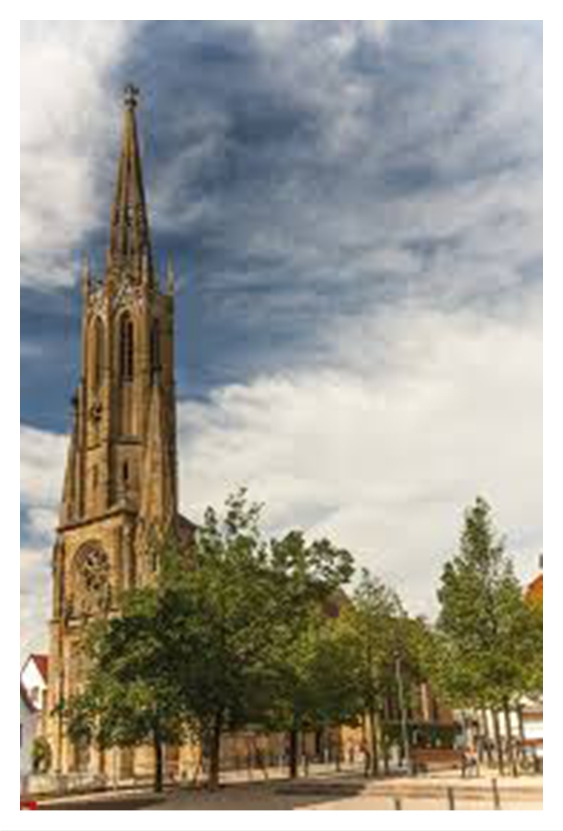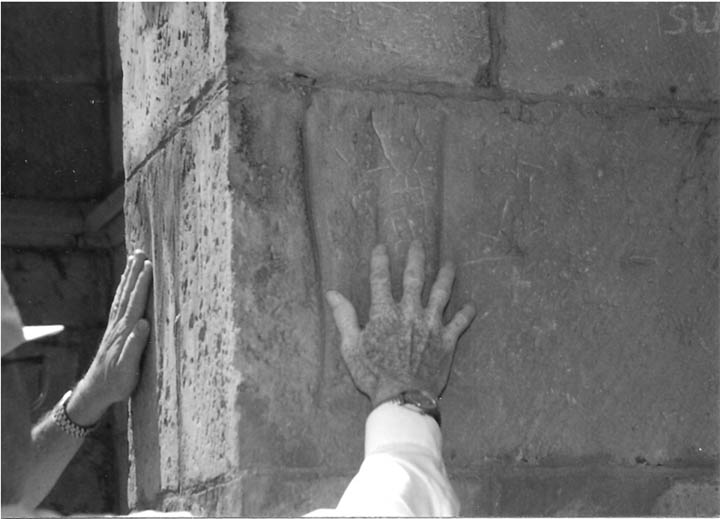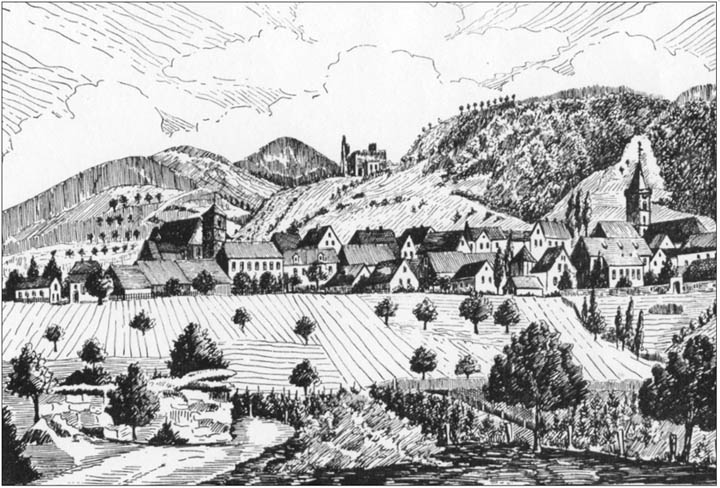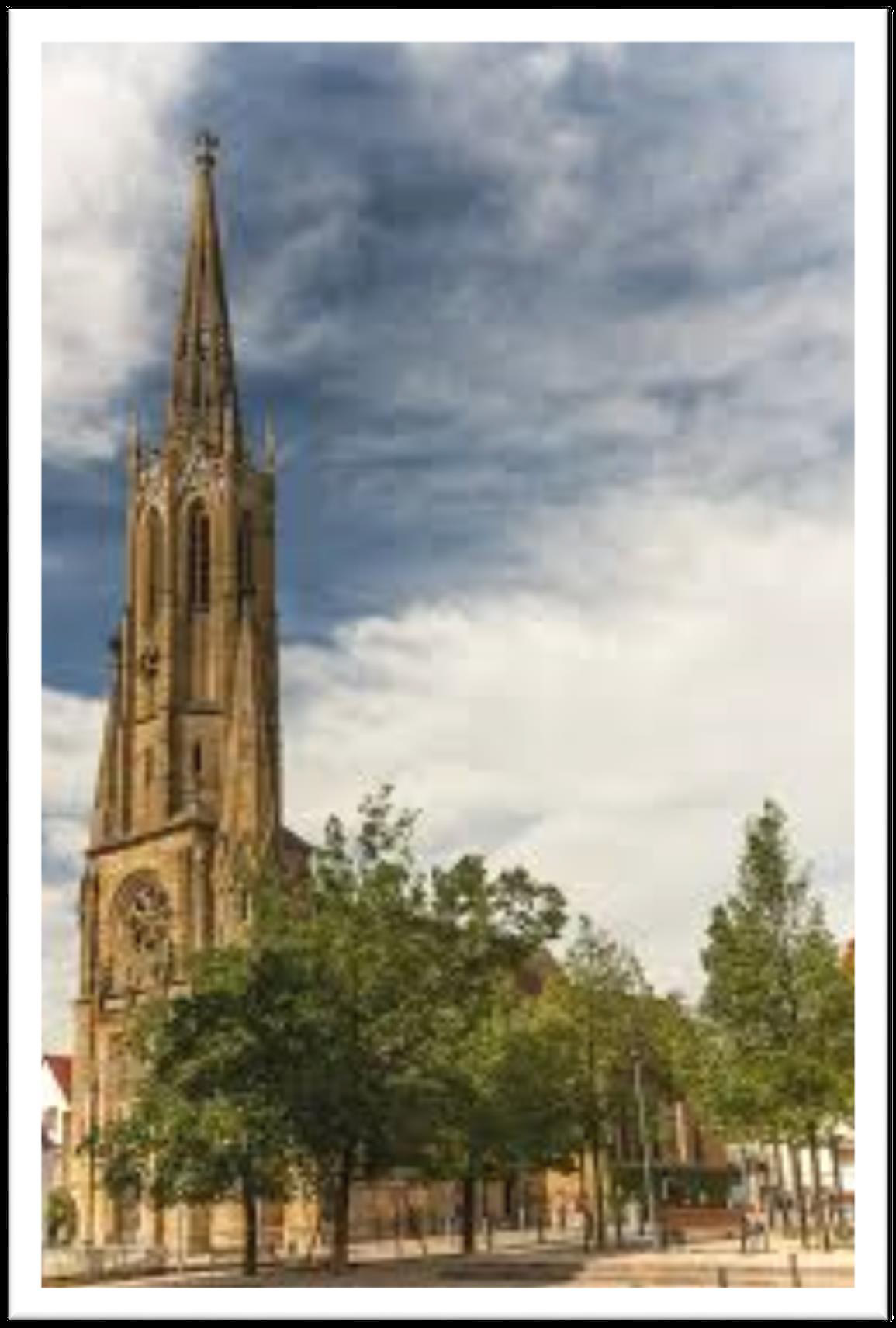
Schlosskirche (Castle Church), Dürkheim, Germany: Site of Friedrich Carl Christlieb's baptism in 1742.
The Schlosskirche at Dürkheim
The ancestral church of the Christlieb family was the scene of several important events in the lives of Christlieb-Chrislip-Crislip ancestors, prior to their coming to America in 1765. Friedrich Carl’s baptism took place in this church on May 20, 1742, followed by his marriage to Anna Catharina Engel/Bock on July 22nd of the same year; their son, Carl’s (Friedrich Carl II) baptism occurred in this place on June 2, 1751; Anna Catharina’s son, Georg Bock, was confirmed there in 1752; the confirmation of Friedrich Carl and Anna Catharina’s elder son, Jacob, followed in 1765. Previous to these events were the baptism of Anna Catharina and Gottfried Bock’s daughter, Johanna Susanna Elisabetha, on June 12, 1740, and the burial of Gottfried Bock on February 10, 1742.
These important events took place in the Schlosskirche (Castle Church) at Dürkheim, a church whose origins can be traced back to 946 A.D., at a time when Dürkheim began to evolve from a tiny village to a community of prominence. The Johanniskirche in Dürkheim, later named Schlosskirche (Castle Church), had a forerunner before the year 1000.
In the 13th century, the Romanesque style St. John’s Church belonged to the Limburg Abbey. In 1360, Türckheim, as it was then called, was given the status of a city and was designated as the strongest fortress in the Haart Mountains.

Shown here are ancient grooves in the exterior stone walls of the church, where soldiers sharpened their swords before going into battle.
Gradually, the Counts of Leiningen succeeded in acquiring more and more control over Dürkheim to the extent that, by 1560, they became its Overlords. Around the year 1572, they introduced the Lutheran Faith into their Duchy. With Dürkheim as their capital city, the ancient church of St. John the Baptist [Sankt Johannes des Tüfers] became a Protestant church. Like the Palatinate, the Counts of Leiningen were also involved in the Reformation.

An 18th-century sketch of Dürkheim with the Limburg Ruin in the background and the Schlosskirche on the right with its peal tower. Another hundred years would pass before the gothic tower would replace the original one.
Becoming the property of the Counts of Leiningen in the 14th century, they pulled down the fundamental walls and rebuilt the church in the Gothic style. Cross-ribbed vaulting and lancet windows were added, as well as a peal tower that can be seen in old engravings of the church.
After the destruction of the Limburg Monastery, a chapel of sepulcher for the family of the Counts of Leiningen was added to the nave of the High Gothic building in 1505.
Dürkheim was the scene of many wars. In 1689, during the Orlean War, the city was almost completely burned to the ground by the French. The old church was gutted by fire. The tower walls of the church suffered such heat from the fire that the bells fell out of their mounts and melted onto the floor of the church.
Following the destruction, the Counts of Leiningen built their palace in Dürkheim in 1725, thus establishing it as the capital city of Leiningen. St. John’s Church that was located next to the royal residence was refurbished in 1727. The beautiful new chancel finished with carvings and the baroque altar of wood was completed in 1729.
Also, in 1729, came the reinforcement of the tower walls with iron bars. This was necessary because they had been weakened in the conflagration of 1689. The strengthened tower walls held until 1847, when they showed signs of imminent collapse and had to be torn down. On the base of the burned out tower, there arose, in 1865-66, the 56-meter-high neo-Gothic tower that graces the church today.







